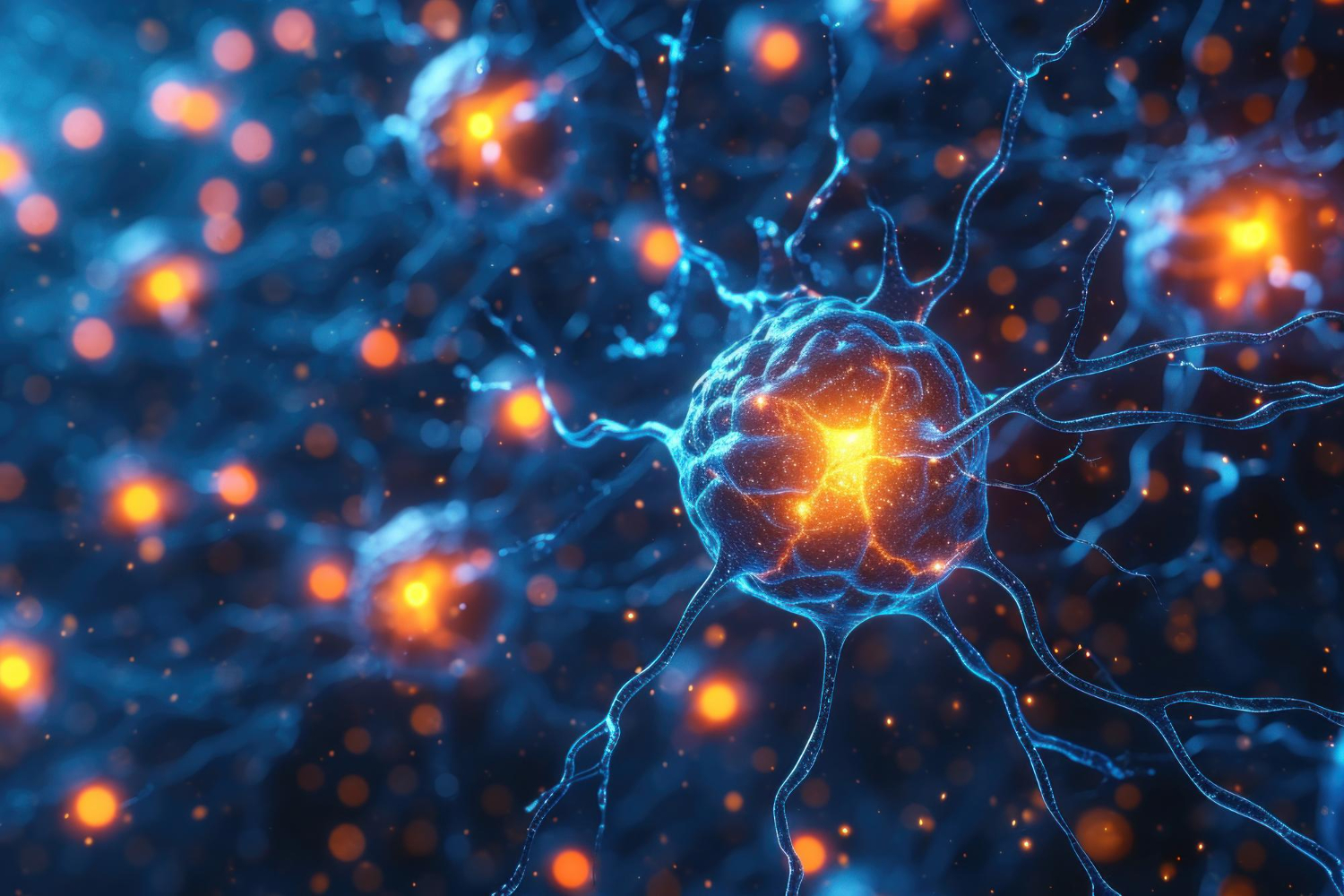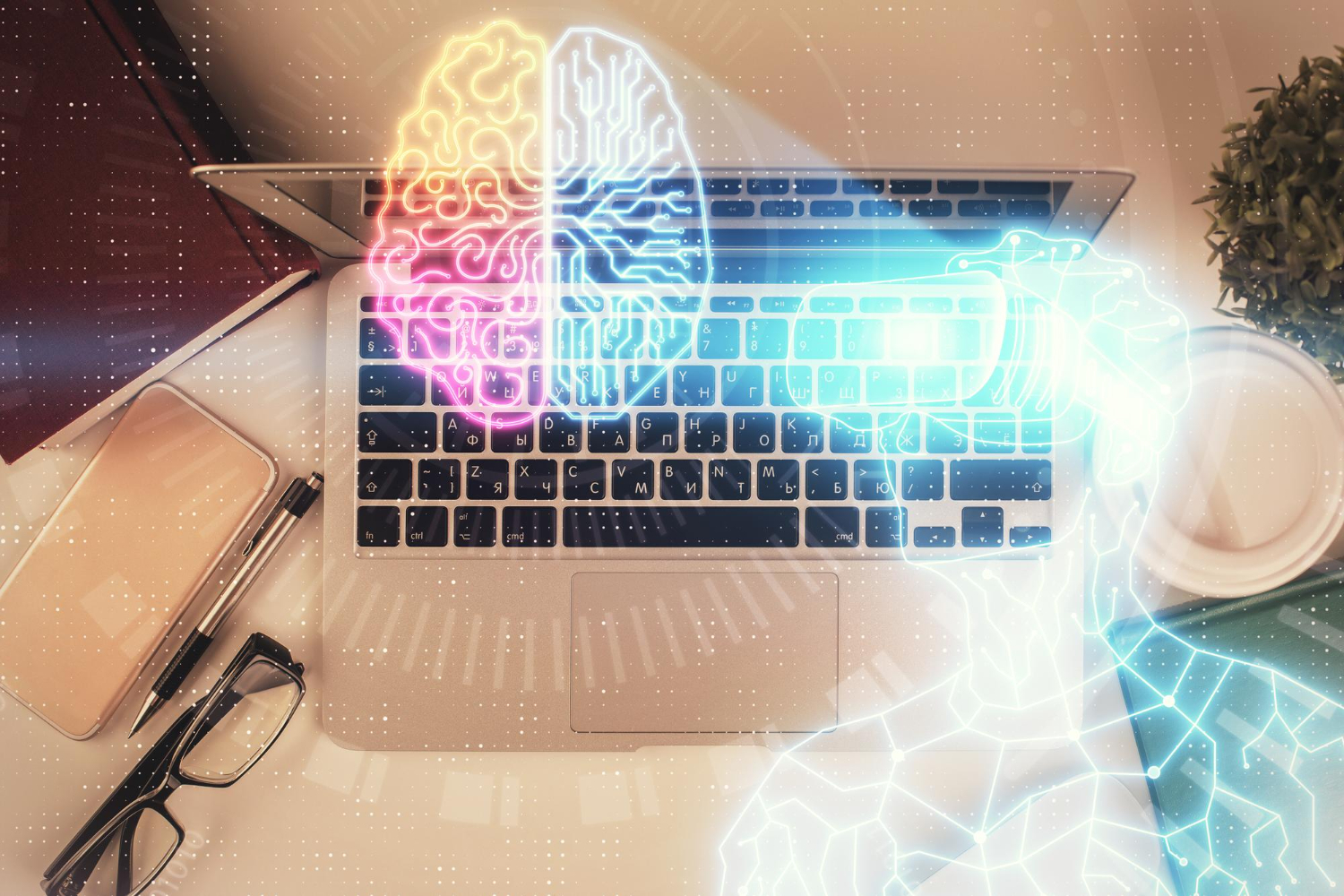
Are you tired of websites that fail to capture your attention or engage your emotions? Welcome to the world of neuroaesthetics and AI-powered web design. By combining the science of aesthetics with the intelligence of artificial intelligence, designers are now able to create websites that not only look visually appealing but also evoke a strong emotional response from users.
Neuroaesthetics, the study of how our brains perceive and process beauty, has long been used in fields like art and architecture. However, it is now being applied to web design as well. By understanding the underlying principles of what makes a design visually pleasing, designers can leverage AI-powered predictive analysis techniques to create websites that are not only visually stunning but also highly engaging.
In this article, we will explore how neuroaesthetics and AI are revolutionizing web design. We will delve into the various ways in which designers are using data-driven insights to create compelling user experiences, and how this combination of science and technology is unlocking the full potential of web design. Get ready to discover how you can elevate your website to the next level with the power of neuroaesthetics and AI.
Understanding the basics of neuroaesthetics
Neuroaesthetics is the interdisciplinary field that seeks to understand how our brains perceive and process beauty. It combines insights from neuroscience, psychology, and art to investigate the neural mechanisms involved in aesthetic experiences. By studying how our brains respond to visual stimuli, researchers have identified certain universal principles that contribute to our perception of beauty.
One such principle is the concept of symmetry. Our brains are wired to find symmetrical patterns visually appealing. Studies have shown that symmetrical designs elicit a stronger positive emotional response compared to asymmetrical ones. This is because symmetrical patterns are easier for our brains to process and make sense of.
Another important principle is the use of color. Different colors evoke different emotions in individuals. For example, warm colors like red and orange are associated with energy and excitement, while cool colors like blue and green are associated with calmness and relaxation. Web designers can leverage this knowledge to create color schemes that align with the desired emotional response from users.
Typography is also a key element in neuroaesthetic design. The choice of fonts and the way text is presented can greatly impact how users perceive a website. Fonts with clean lines and easy readability are generally preferred, as they are easier for our brains to process. Additionally, the spacing between letters and lines can also affect the overall aesthetic appeal of a design.
Understanding these basic principles of neuroaesthetics is crucial for web designers looking to create visually appealing websites that capture users’ attention and evoke positive emotional responses. By incorporating these principles into their design process, designers can create websites that not only look good but also engage users on a deeper level, leading to higher user satisfaction and increased conversion rates.
The role of AI in web design
Artificial intelligence (AI) has revolutionized various industries, and web design is no exception. AI-powered algorithms and predictive analysis techniques have made it possible for designers to create highly personalized and engaging user experiences. By analyzing vast amounts of data, AI can identify patterns and trends that humans may overlook, leading to more effective design decisions.
One of the key roles of AI in web design is its ability to analyze user behavior and preferences. By tracking user interactions, AI algorithms can learn about individual preferences and tailor the website experience accordingly. For example, if a user spends more time on a particular type of content, the AI can recommend similar content or personalize the website layout to highlight relevant information.
AI can also assist in automating repetitive design tasks. For example, AI-powered tools can generate multiple design variations based on a set of parameters or automatically resize images to fit different screen sizes. This not only saves time for designers but also ensures consistency and efficiency in the design process.
Furthermore, AI can help designers make data-driven decisions by analyzing user feedback and sentiment analysis. By analyzing user reviews and comments, AI algorithms can provide insights into what aspects of a website are working well and what areas need improvement. This allows designers to iterate and optimize their designs based on real user feedback, leading to better user experiences.
In summary, AI plays a crucial role in web design by enabling designers to create personalized and engaging user experiences, automating repetitive tasks, and providing data-driven insights for design optimization. By harnessing the power of AI, designers can unlock new possibilities and elevate their web design to the next level.

The benefits of incorporating neuroaesthetics and AI in web design
The combination of neuroaesthetics and AI in web design offers numerous benefits for both designers and users. By incorporating the principles of neuroaesthetics, designers can create visually appealing websites that capture users’ attention and evoke positive emotional responses. This can lead to increased user engagement, longer browsing times, and higher conversion rates.
AI-powered predictive analysis techniques further enhance the design process by providing data-driven insights and automating repetitive tasks. By analyzing user data, AI algorithms can identify trends and patterns that can inform design decisions. This leads to more effective design choices that are tailored to individual user preferences, resulting in a highly personalized user experience.
One of the key benefits of using AI and neuroaesthetics in web design is improved user satisfaction. When a website is visually appealing and engages users emotionally, it creates a positive impression and fosters a sense of trust and credibility. Users are more likely to stay on a website that is aesthetically pleasing and provides a seamless browsing experience.
Another benefit is increased conversion rates. When users have a positive emotional response to a website, they are more likely to take the desired action, whether it’s making a purchase, signing up for a newsletter, or filling out a contact form. By leveraging the power of neuroaesthetics and AI, designers can create websites that not only attract users but also drive them to convert.
Furthermore, incorporating neuroaesthetics and AI in web design can also lead to improved accessibility. By understanding how our brains perceive and process visual information, designers can create websites that are easier for individuals with visual impairments to navigate. AI can assist in automatically generating alt text for images or suggesting color schemes that meet accessibility guidelines.
Incorporating neuroaesthetics and AI in web design offers a multitude of benefits for both designers and users. By creating visually appealing and emotionally engaging websites, designers can enhance user satisfaction, increase conversion rates, and improve accessibility. The combination of science and technology opens up new possibilities for web design, allowing designers to create experiences that truly resonate with users.
Predictive analysis and its impact on web design
Predictive analysis is a powerful technique that leverages AI and data analysis to make predictions about future outcomes based on historical data. In the context of web design, predictive analysis can be used to gain insights into user behavior and preferences, allowing designers to create more effective and engaging user experiences.
One of the key applications of predictive analysis in web design is user segmentation. By analyzing user data, AI algorithms can identify different segments of users with similar characteristics and behaviors. This segmentation allows designers to create targeted experiences for different user groups, tailoring the website content and design to meet their specific needs and preferences.
Another application is predictive content personalization. By analyzing user interactions and historical data, AI algorithms can predict what type of content a user is most likely to engage with. This allows designers to dynamically personalize the website experience by presenting users with relevant content recommendations or adapting the layout based on their preferences.
Predictive analysis can also be used to optimize website performance. By analyzing user data, AI algorithms can identify patterns and trends that impact website performance, such as slow loading times or high bounce rates. Designers can then make data-driven decisions to optimize the website for better performance, leading to improved user experiences.
Furthermore, predictive analysis can assist in A/B testing and design optimization. By analyzing user interactions and comparing different design variations, AI algorithms can identify which design elements are more effective in achieving desired outcomes. This allows designers to iterate and optimize their designs based on real user data, leading to more effective and engaging user experiences.
The impact of predictive analysis on web design is significant. By leveraging AI and data analysis techniques, designers can gain valuable insights into user behavior and preferences, allowing them to create personalized and engaging user experiences. Predictive analysis enables designers to make data-driven design decisions, leading to better website performance and improved user satisfaction.
How to implement predictive analysis in web design
Implementing predictive analysis in web design requires a combination of data collection, analysis, and design iteration. Here are the key steps to follow when incorporating predictive analysis in the design process:
- Data collection: The first step is to collect relevant data about user behavior and interactions on the website. This can include data such as click-through rates, time spent on page, scroll depth, and conversion rates. Various tools and analytics platforms are available to assist in data collection, such as Google Analytics or heat mapping tools.
- Data analysis: Once the data is collected, it needs to be analyzed to gain insights into user behavior and preferences. This can be done using AI-powered algorithms or data analysis tools. The analysis should identify patterns, trends, and user segments that can inform design decisions.
- Design iteration: Based on the insights gained from the data analysis, designers can iterate and optimize their designs. This can involve making changes to the layout, content, color schemes, or typography to better align with user preferences. A/B testing can also be conducted to compare different design variations and identify the most effective elements.
- Continuous monitoring and optimization: Predictive analysis is an ongoing process that requires continuous monitoring and optimization. Designers should regularly analyze user data and make iterative improvements to the design based on new insights. This allows for continuous refinement and optimization of the website experience.
By following these steps, designers can effectively implement predictive analysis in the web design process, leading to more personalized and engaging user experiences. The combination of data-driven insights and design iteration enables designers to create websites that are tailored to individual user preferences, resulting in higher user satisfaction and improved conversion rates.

Case studies of successful implementations of neuroaesthetics and AI in web design
To illustrate the impact of neuroaesthetics and AI in web design, let’s explore a few case studies of successful implementations:
- Spotify: Spotify, the popular music streaming platform, uses AI algorithms to analyze user listening behavior and provide personalized music recommendations. By understanding individual music preferences, Spotify creates custom playlists and suggests similar artists or songs that align with user tastes. This personalized approach enhances the user experience and keeps users engaged on the platform.
- Netflix: Netflix leverages predictive analysis to recommend movies and TV shows to its users. By analyzing user viewing history and preferences, Netflix’s AI algorithms can predict what content users are likely to enjoy. This personalized recommendation system not only enhances the user experience but also drives user engagement and retention.
- Amazon: Amazon uses predictive analysis to personalize the shopping experience for its users. By analyzing user browsing and purchase history, Amazon can recommend products that align with individual preferences. Additionally, Amazon’s AI algorithms analyze user reviews and ratings to provide personalized product recommendations. This tailored approach enhances the user experience and increases conversion rates.
These case studies highlight the power of neuroaesthetics and AI in web design. By leveraging data-driven insights and predictive analysis, these companies have created highly personalized and engaging user experiences. The combination of science and technology enables designers to create websites that not only look visually appealing but also provide relevant and tailored content, leading to higher user satisfaction and increased conversion rates.
Tools and resources for incorporating neuroaesthetics and AI in web design
Incorporating neuroaesthetics and AI in web design requires the use of various tools and resources. Here are some key tools and resources that can assist designers in harnessing the power of neuroaesthetics and AI:
- Design software: Design software such as Adobe Creative Cloud or Sketch provides designers with the necessary tools to create visually appealing designs. These software packages offer features like advanced typography controls, color management, and layout design capabilities that can be leveraged to incorporate neuroaesthetic principles into web design.
- AI-powered design tools: There are a variety of AI-powered design tools available that can assist designers in automating repetitive tasks and generating design variations. Tools like Framer or Canva utilize AI algorithms to generate design suggestions, resize images, or automate layout adjustments. These tools can save designers time and enhance the design process.
- Data analytics platforms: Data analytics platforms like Google Analytics or Hotjar allow designers to collect and analyze user data. These platforms provide valuable insights into user behavior and preferences, enabling designers to make data-driven design decisions. By understanding how users interact with a website, designers can optimize the design for better user experiences.
- Online communities and forums: Online communities and forums focused on web design and AI can provide valuable resources and insights. Platforms like UX Stack Exchange or AI For Designers offer opportunities for designers to connect with peers, ask questions, and learn from experts. These communities can provide inspiration and guidance in incorporating neuroaesthetics and AI into web design.
By leveraging these tools and resources, designers can effectively incorporate neuroaesthetics and AI into their web design process. The combination of design software, AI-powered tools, data analytics platforms, and online communities enables designers to create visually appealing and engaging user experiences that resonate with users.

Future Trends in Neuroaesthetics and AI in Web Design
As technology continues to advance, the potential applications of neuroaesthetics and AI in web design are expanding. One future trend that we can expect to see is the integration of AI-powered chatbots into website designs. These chatbots, powered by natural language processing algorithms, will be able to engage with users in a more conversational and personalized manner. By analyzing user data and preferences, these chatbots can provide tailored recommendations and assistance, creating a more immersive and user-centric web experience.
Another future trend is the use of generative design algorithms. These algorithms can generate multiple design variations based on user preferences and feedback. By incorporating user input into the design process, designers can create highly personalized websites that cater to individual needs and preferences. This level of customization not only enhances the user experience but also increases user engagement and satisfaction.
Additionally, the rise of virtual reality (VR) and augmented reality (AR) technology opens up new possibilities for incorporating neuroaesthetics and AI into web design. VR and AR can create immersive and interactive experiences that go beyond the limitations of traditional 2D web design. By combining neuroaesthetics principles with AI algorithms, designers can create visually stunning and emotionally engaging VR and AR experiences that captivate users and leave a lasting impression.
In conclusion, the future of web design lies in the integration of neuroaesthetics and AI. By leveraging the power of predictive analysis and data-driven insights, designers can create websites that not only look visually appealing but also evoke a strong emotional response from users. With the availability of tools and resources, as well as emerging trends in AI and technology, the possibilities for elevating web design are endless. So, embrace the power of neuroaesthetics and AI, and unlock the full potential of your website.




